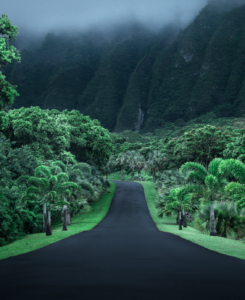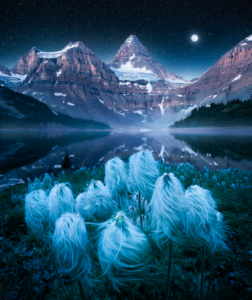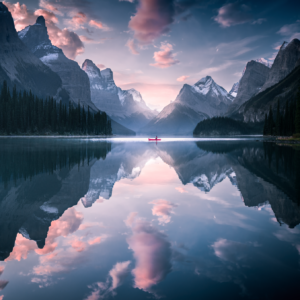To recap where we’ve come from and why this blog series exists - a brief history review and my own thoughts on why NFTs matter:
The Industrial Revolution enabled an increased scale in human organization that facilitated specialization and coordination. Groups of people were brought together in production processes, leading to the rise of commerce and infrastructure types previously hard to imagine. A process ongoing for the last several hundred years, it can be fairly argued that we’re now experiencing a new phase of Industrial Revolution, one that will shape the World in ways we do not yet fully understand.
The first infrastructure developed during the Industrial Revolution was transportation - roads, canals, rail, air - for the movement of people and goods. The second infrastructure developed was energy utilities - oil, pipelines, gas, electricity - for the transmission of power. The third infrastructure has been telecommunications - radio, tv, satellite, Internet - but to what end? Digital Identity. Yielding authority, influence, sovereignty and community, an individual’s digital Identity now has real value, and that digital Identity is best expressed by NFT.
Essential for establishing Identity and authority, NFTs look to be the most likely candidate for spurring increased scale in human organization and bringing together groups of people in the production process. In the space where blockchain meets NFTs we should begin to see new kinds of stores, new habits of time, new work processes, new forms of communication, new kinds of commerce, new ideologies, new forms of play and leisure, new communities. NFTs are the latest versions of the Industrial Revolution’s essentials - technology plus organization.
But what does NFT utility and adoption look like in five years? Ten years? Does NFT utility even matter? Who are the winners in the end? We’ve entered a creativity-based culture, so let’s talk to the creators! With so many unknowns in this new phase of Industrial Revolution, I’ve taken it upon myself to dig into the minds and projects of important NFT creators and crypto artists. My first goal in doing so is to better clarify to new and potential collectors what the NFT market looks like right now in order to set a benchmark for future comparisons. Next, in dedicating each blog post in this series to a single artist, I’m hoping to bring eyeballs and engagement to the artist interviewed. These are the interviews in the series so far:
- Chatting With The RektGuy
- The Brand & Business of Guido Di Salle
- The Brand & Business of TylersJourney
- The Brand & Business of Gabriella Morton
- The Brand & Business of Neil Burnell
- The Brand & Business of Dave Krugman
- The Brand & Business of DarkMarkArt
- A Chat With The Regulars
- The Brand & Business of Patrick Amadon
- A Chat With @spz7dsn_graphic of BrickBeads
Interview of @cathsimard_
Today I’m chatting with nature explorer Cath Simard, a talented wilderness-composite artist with a distinctive style, well-known for her extreme drive and deep immersion into her subject matter. Web3 seems a perfect fit for Cath, a place where a naturally shy perfectionist verging on workaholic can show strong support for her community. “I love to collect the work of other passionate artists!”, Cath states.
But how did Cath get here and what makes her special? An obviously important creator, Cath recently ran an auction of the two composites she put together from her trip to Patagonia. Each image was offered as a limited Edition and cleared 80eth, or approximately $275k in sales. Representing a new ATH for her work, Cath said “It was fun to completely let the market decide the price of these two images!”
Now let’s get to that Q&A!
How do you define web3?
Web3 is freedom. I define web3 as a place where artists can express themselves freely and take ownership of their art, instead of working for a brand and creating according to someone else’s guidelines. In web3, the sky's the limit and I’m living my life on my terms. Everything I’ve been doing since I entered the NFT space are my own projects. What artist doesn’t want the freedom to create and to live their passion? I need to create to survive, that’s what’s going on with me. Web3 is my creative outlet, without which I would be miserable.
How do you describe your art?
I’m a composite photographer. I create works that are not exactly reality - they are reality in my imagination. I like to assemble composite pieces in a geometric way, and I feel like my art often comes out as surreal, even sci-fi. I create new worlds. I like cold colors, especially blues, and the deep wilderness, especially mountains. I’m inspired when people look at my art and say, “Is this real life?” I think that’s the beauty of my art - it makes people dream and motivates them to explore outside of their comfort zones.
How do you differentiate your brand?
I go all in. I always go beyond just creating images and storytelling is extremely important for my work. For example, in my Genesis drop, one image included an in-person canoe trip with me to that specific spot pictured in the NFT. At that time there was no other artist incorporating in-person experiences into their art. I’m always experimenting and seeking to engage my community in interesting ways. Also … typos. I have a lot of typos in my tweets - that’s totally part of my brand now, haha. But I’m French so I can get away with that.
As a composite artist, my editing process has a lot to do with how I differentiate my brand and create instantly recognizable pieces of art. There’s a lot of my brain that goes into each of my pieces - when you approach landscape photography in a way where you can get really creative with all of the elements then you’re basically building a piece of art that is a representation of yourself… you’re merging yourself with the landscape in a way. My confidence can definitely be seen in my work.
I do believe new artists entering the space, or artists wanting to take their work to the next level, need to utilize the new technologies that are available (such as Transient Labs). It’s attractive for collectors and right now they are valuing more highly those artists pushing their art to the next level using these tools. Also, many artists get stuck in ideas. There are a lot of great ideas out there, but if you’re not willing to put the time into actually doing them, and the energy and the work into the doing them, then they’ll stay ideas forever. I’m definitely a doer more than a talker - I’m always working to improve my craft and I’m not afraid to invest in myself.
Why does your art have value?
That’s a great question! I do believe my art stands out. The way I photograph is different, my style is different, and my work is also very scarce. In my shoots I’m taking people on a journey, to places most people can’t go and creating shots people can’t replicate. I prioritize places that are remote and that have not yet been photographed. There’s a lot of effort and time taken in creating a single final image, and I even research the area and shot I want to capture for years. I research the composition, the trails, the Trip Reports. I like to conceptualize the work, and then in the field I need very specific conditions which occur rarely. So in the end there is scarcity of the environment and location, scarcity of the number of pieces produced, and scarcity of my time that I believe add value to my art.
How do you determine your NFT mint price?
My first drop the NFT mint price was 6.33e, which I determined by actually calculating real costs such as travel and time, versus the number of pieces in the collection. Because each piece takes so long to produce it’s impossible for me to produce more than six to ten pieces per year… calculating real costs and expenses is important. I’m not the type of photographer that’s going to come back from a trip with thousands of images. For my last trip, to Patagonia, I stayed there for three months, then it took me a few weeks - almost a month - to edit, for only two final images. As a result of how I work I’ve been able to find my price point pretty easily. Now I just set a reserve.
What were some major challenges you experienced in your NFT art journey?
Ever since I shared my first composite in 2016 I’ve been receiving criticism. I never let that affect my art, though. I can’t tell you how much criticism I received about my art, how many haters I got, because I’m a composite artist. Still sometimes on Twitter I get comments from people saying “if it’s not a real landscape, then the work isn’t valuable.” The community has proven that my view is relevant, though.
Then, after an amazing first NFT drop, I didn’t have another sale for two months! I must say - I was quite demoralized. I took a risky approach in my mint price and photography was new to NFTs then, but I wanted to establish myself as a top-tier artist from the start. On top of that, I’m super shy, struggle with in-person networking and I’m a very introverted person. Public speaking is a challenge for me and selling myself in person is difficult.
Artists as a whole could benefit from being a little more business savvy. What are some key actions you took to establish your career?
I started out by listening to people in Clubhouse. At the time I wasn’t in a good place financially because of Covid, so I was very motivated to learn quickly. I spent five months, 12 hours a day, obsessed with and learning about NFTs, sharing other artists’ wins, and building my community. I was very shy, so I would challenge myself to jump on stage and talk about my art. By doing that I established some great friendships and the root of my community on Twitter. I didn’t build my community from Instagram - I built my name during the Clubhouse Era and went from Clubhouse to Twitter, where I created a new identity - a totally less polished version of myself.
Also, for my first NFT drop I really wanted to be on SuperRare. I could have minted on Foundation or Opensea, but I had a higher vision for my work so I waited to be accepted on SuperRare. I decided to be patient rather than rushing. I was only the third photographer whose work was accepted on SuperRare - I remember SuperRare saying then that they weren’t sure if they were going to have photography on their platform long-term.
In closing …
I’d like to close with all the important DYOR links I could find on Cath as well as some of my favorite pieces from her SuperRare, NiftyGateway and Opensea.
DYOR Links:
- Twitter - https://twitter.com/cathsimard_
- Instagram - https://www.instagram.com/cathsimard/
- SuperRare - https://superrare.com/cathsimard
- NiftyGateway - https://www.niftygateway.com/collections/cath-simard
- ExchangeArt - https://exchange.art/artists/Cath%20Simard/nfts
- Website - https://www.cathsimard.com/
- Free Hawaii - https://www.freehawaiiphoto.com/
- Opensea -
- Editions - https://opensea.io/collection/cath-simard-editions
- Metascapes - https://opensea.io/collection/the-metascapes



Besides Cath beeing an excellent photographer, she has an outstanding good heart. She always helps others photographers sharing his knowledge about NFTs for free. I appreciate her personality.